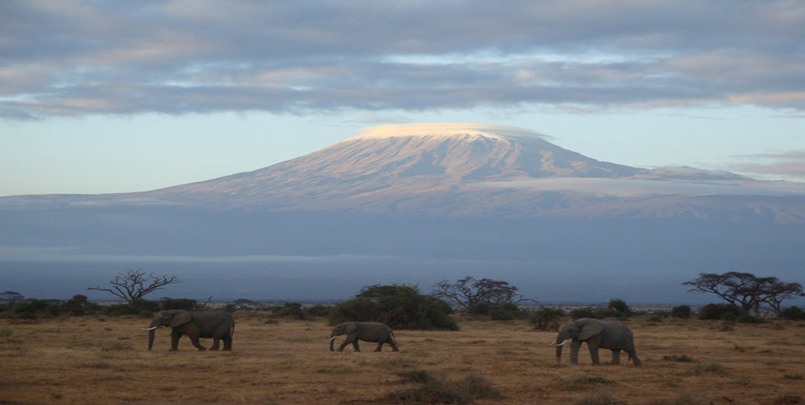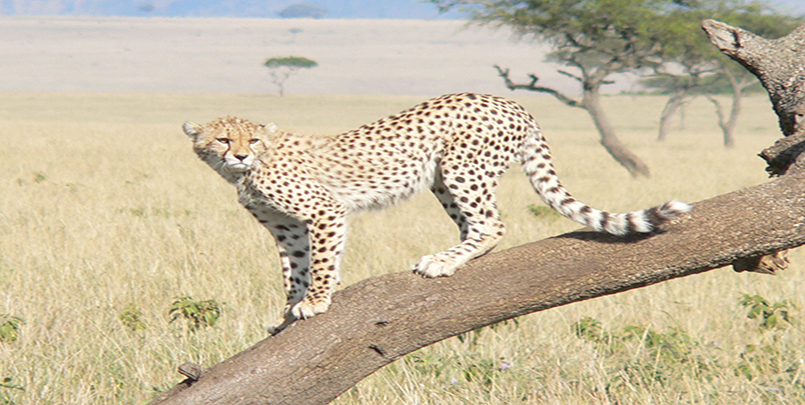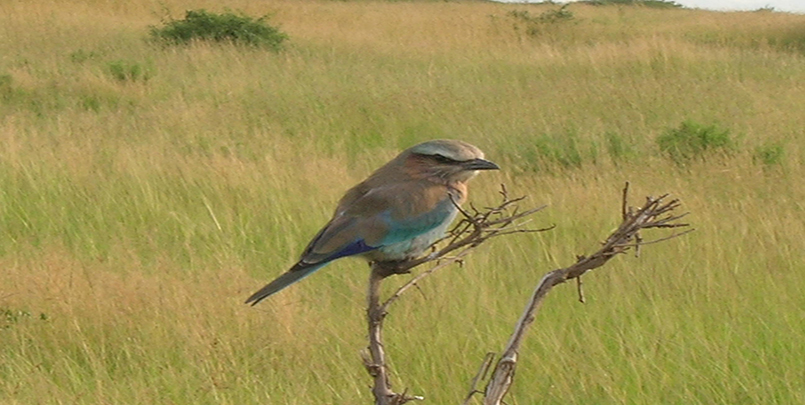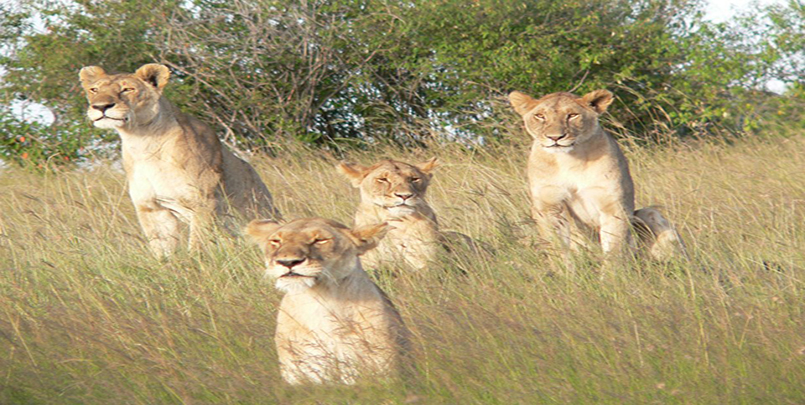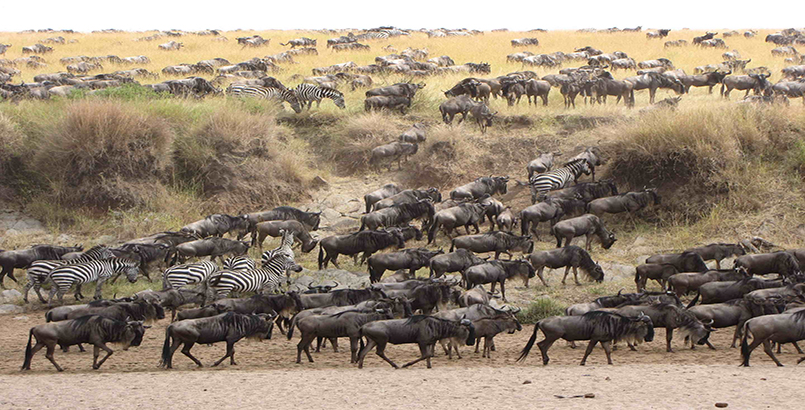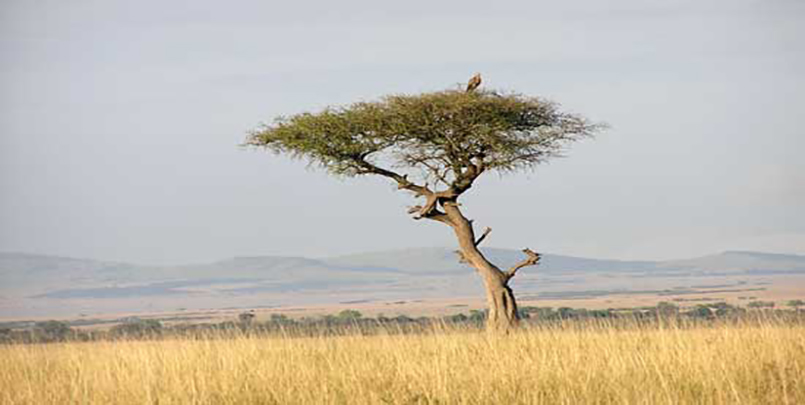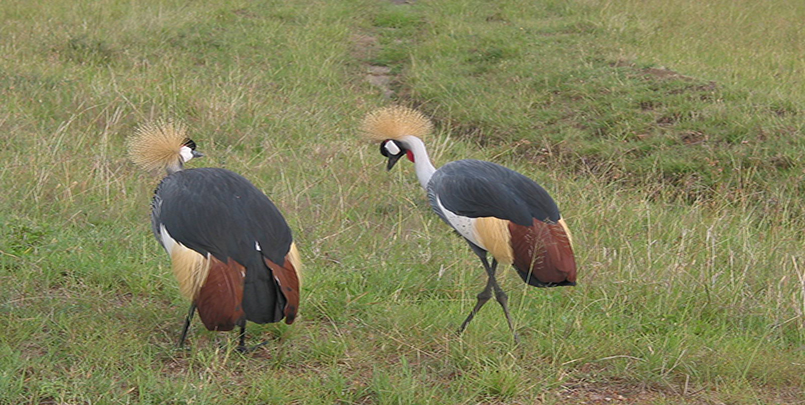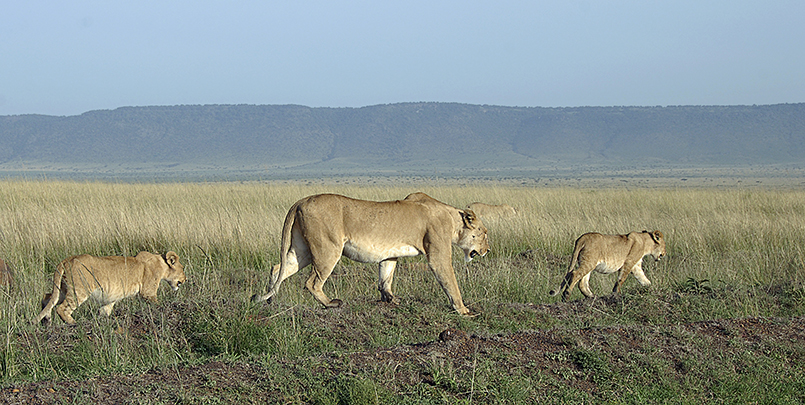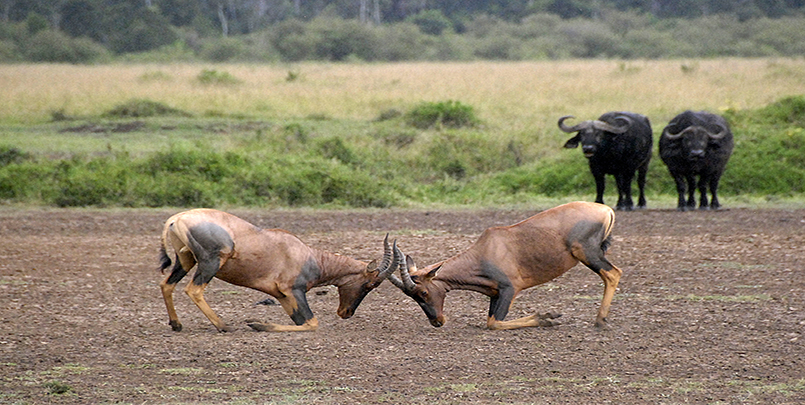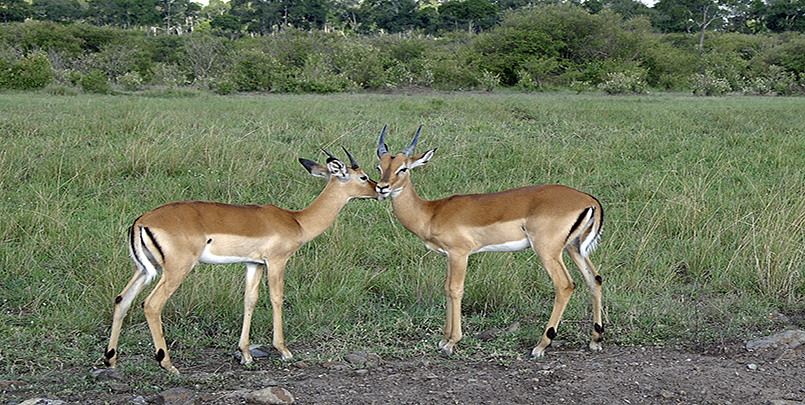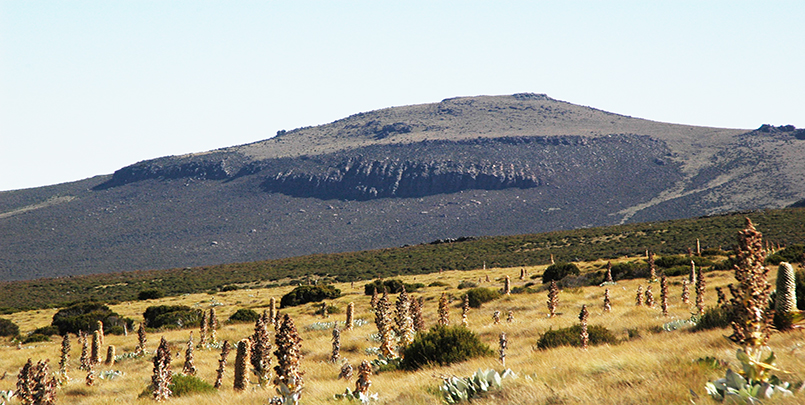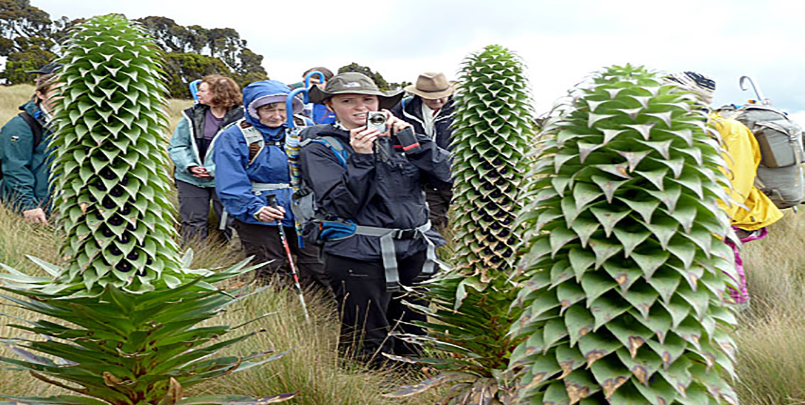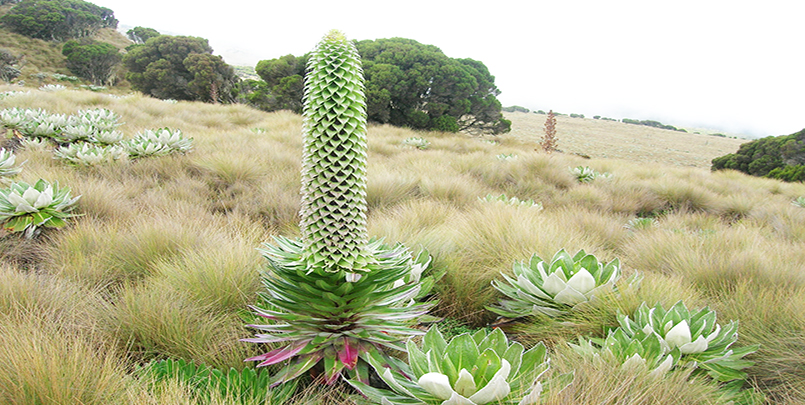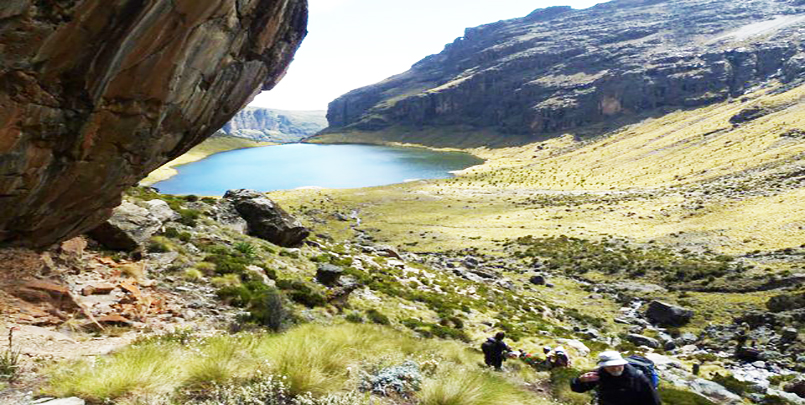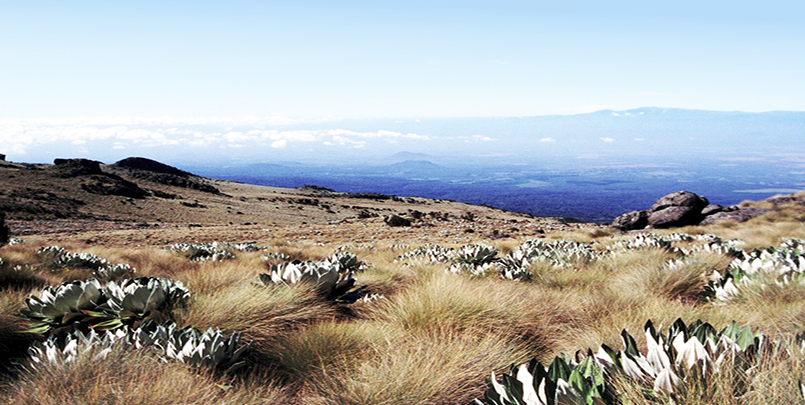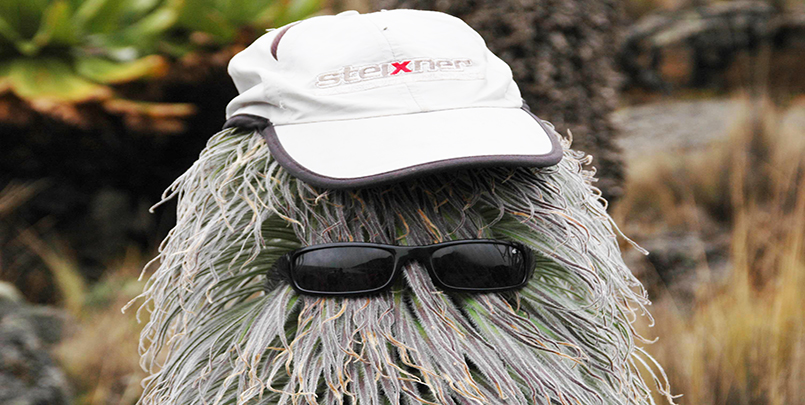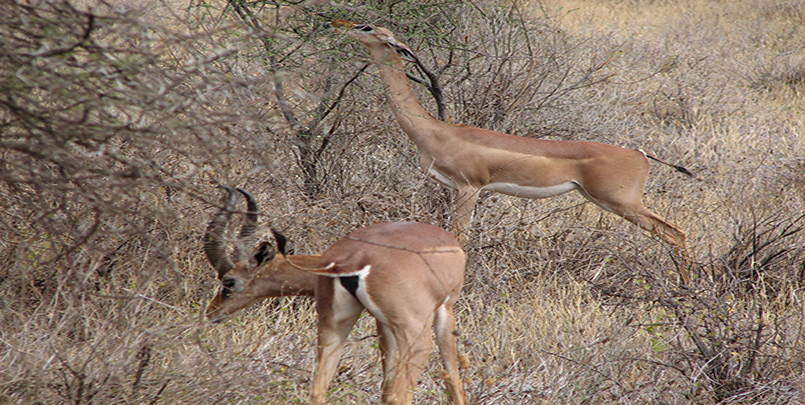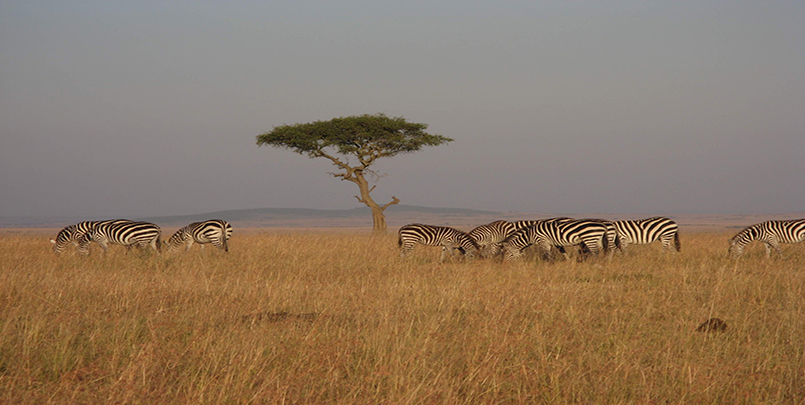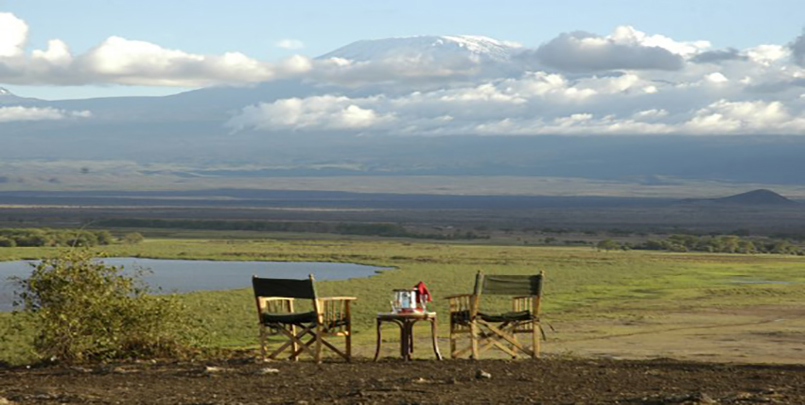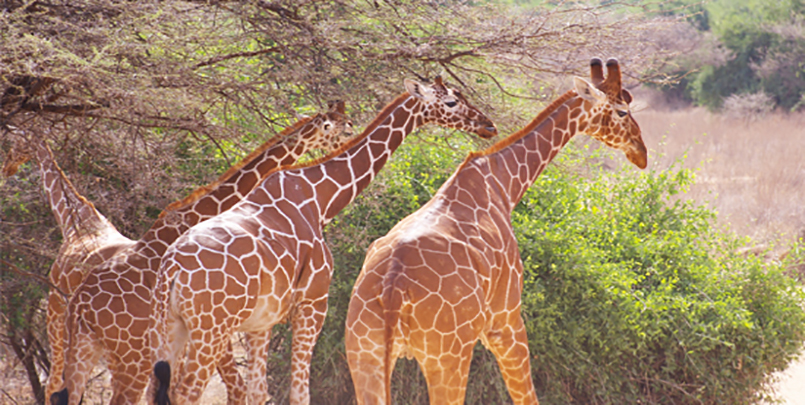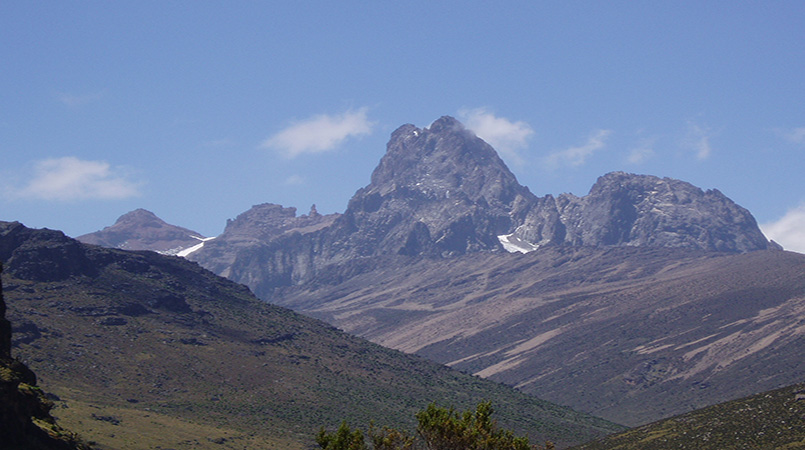
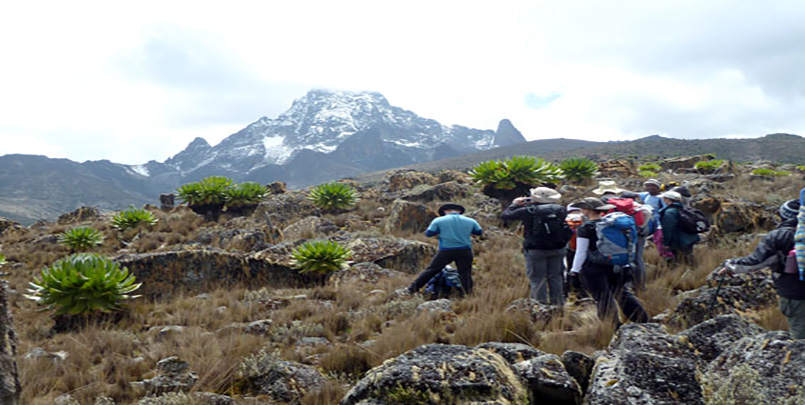
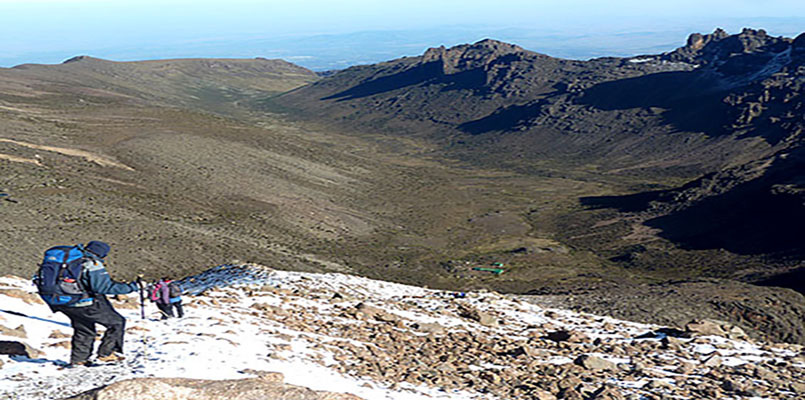
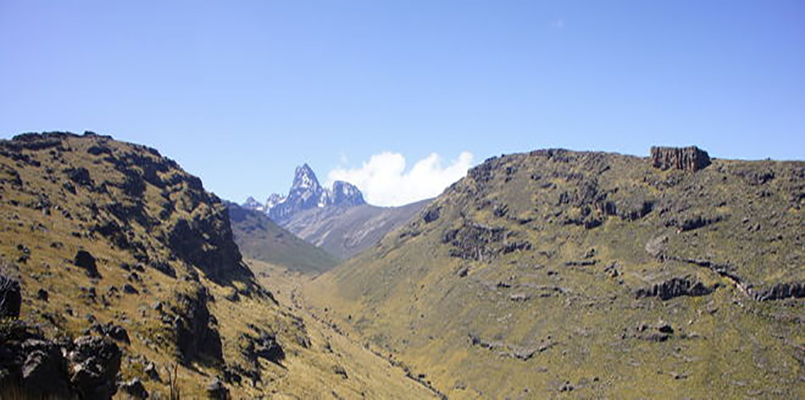
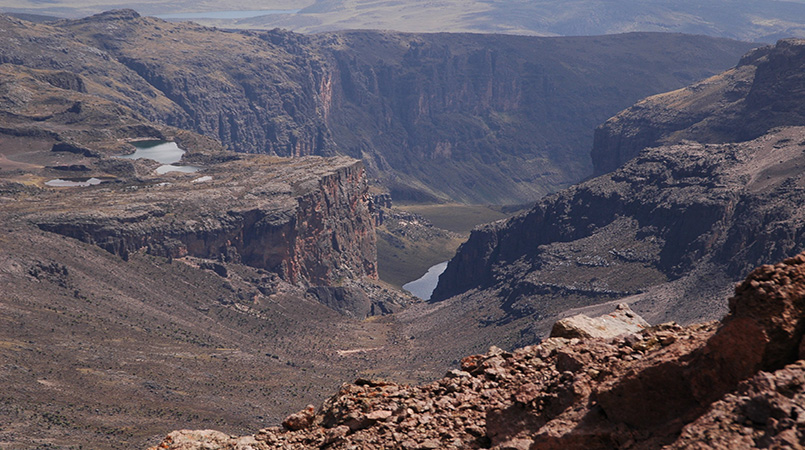
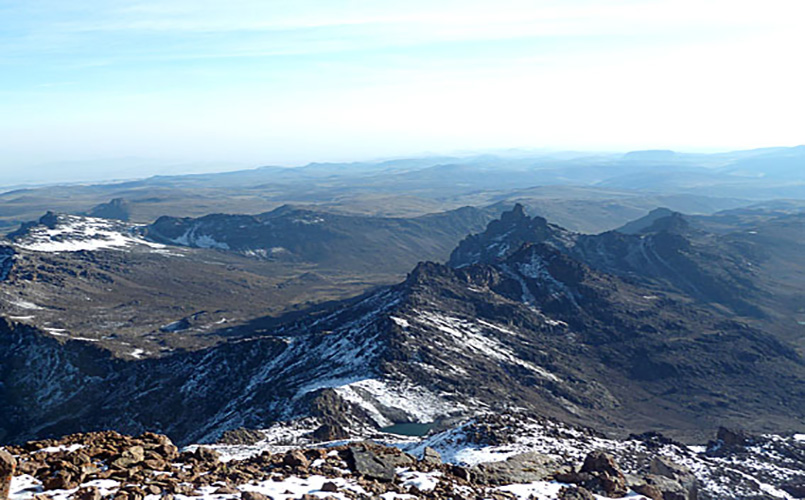






Exploration of contrasting and remarkably spectacular sceneries of Mt Kenya. This particular Itinerary affords the mountain climbers a moderate hiking opportunity. The ascent is gentle, with an overnight at an acclimatizing altitude. The highlight of the trip is a challenging but exhilarating pre-dawn hike to the summit (Point Lenana)
Itinerary outline:
FLIGHT – NAIROBI (1680Mts)
NAIROBI – CHOGORIA – BANDAS (3000Mts) (Drive to Chogoria and hike up to Meru mount Kenya Bandas).
CHOGORIA BANDAS – LAKE ELLIS CAMP (3400Mts) (Hike to Mugi hill for acclimatization and down to Lake Ellis camp).
LAKE ELLIS CAMP – LAKE MICHAELSON CAMP (4000Mts) (Fishing option in the afternoon).
LAKE MICHAELSON – SIMBA COLE (4600Mts) (easy afternoon)
SIMBA COLE – LENANA PEAK (4985Mts) – SHIPTON’S HUT (4200Mts) – OLD MOSES (3340Mts) BANTU LODGE (1950Mts) Hike up to point Lenana then down Sirimon route)
BACK TO NAIROBI (drive back to Nairobi and connect with flight back home).
Day 01:
IN FLIGHT OR ARRIVAL IN KENYA.
Depending on the flight; some arrive today while others arrive tomorrow morning.
If you arrive to day, You will be met by our staff on arrival at Nairobi Airport. Mostly it will be at night and you will have had dinner in the flight. You will be transferred to the reserved hotel for overnight stay, which is booked on Bed and Breakfast and it is at extra cost.
The airport is approximately 20-35 minutes drive to Most of the hotels depending on traffic.
Nairobi is the capital city of Kenya. The name “Nairobi” comes from the Maasai phrase “Enkare Nyirobi”, which translates to “the place of cool waters”. Founded in 1899 as a simple rail depot on the railway linking Mombasa to Uganda, the town quickly grew to become the capital of British East Africa in 1907 and eventually the capital of a free Kenyan republic in 1963. Nairobi is the most populous city in East Africa, with a current estimated population of about 5 million.
At 1,795 metres (5,889 ft) above sea level, Nairobi enjoys a moderate climate. Nairobi has a Subtropical Highland climate.
Nairobi is nicknamed the Safari Capital of the World, and has many spectacular hotels to cater for safari-bound tourists.
Day 02:
NAIROBI – CHOGORIA - MOUNT KENYA BANDAS (3000Mts)
Depart from the Nairobi by 07.30hrs headed for Chogoria. The drive will take you approximately 4 – 5 hrs and pass through agricultural country. You will arrive in time for lunch (picnic). Chogoria is a small urban settlement on the slopes of mount Kenya and it is the start of the Chogoria route. The road from Chogoria village to the Bandas is rugged. Chogoria Bandas is 30 km from the village but the vehicle will take for only 20km and walk up the other 10km. This walk helps with much needed acclimatization. This will a 2 hours walk through forest and bamboo zone. You will get to the Banda by 17.00hrs.
- DRIVE DISTANCE: Drive to Chogoria is 200 Km.
- DRIVE TIME: Drive time to Chogoria is 4-5 hours.
- WALK : Afternoon acclimatization Walk from Chogoria forest to bandas – 10km
- WALK TIME: 2 hrs.
- ACCOMMODATION: Stay at Chogoria Bandas – 3000Mts. (Comfortable Log cabins with beds)
- MEALS: Lunch will be picnic. Dinner and overnight will be at the bandas
Day 03:
CHOGORIA BANDAS – LAKE ELLIS CAMP (3400)
Leaving after breakfast and hike through Nithi water fall to Lake Ellis. The wet forest landscape opens abruptly above the bamboo zone, presenting a vista of parkland laced with magnificent stands of East African Rosewood (Hagenia abbysinica) – massive trees that are centuries old with broad trunks and a spreading umbrella shaped crown. Arrive at Lake Ellis for lunch. Afternoon we divert from the main track to Mugi hill (3500m) for better acclimatization, climb the hill then descend and walk back to our camp beside the lake for dinner and overnight.
- WALK TIME: 5 hrs.
- ACCOMMODATION: Stay at Lake Ellis Camp (3400Mts). We use 2-man mountain tents with karrimats.
- MEALS: Lunch, Dinner and overnight will be Lake Ellis Camp.
Day 04:
LAKE ELLIS CAMP – LAKE MICHAELSON CAMP (4000Mts).
Leave Lake Ellis camp after breakfast and hike along the ridge from where you can enjoy good views of the picturesque Gorges Valley, the Temple, lakes, mushroom rocks, billiards table and the high peaks. Hike for 5-6 hours to Lake Michaelson for lunch, Trout fishing in the afternoon. dinner and overnight at the camp by the lake.
- WALK TIME: 5 – 6 hrs.
- ALTITUDE CHANGE. Lake Ellis Camp 3400mts to Lake Michaelson 4000mts.
- ACCOMMODATION: Stay at Lake Michaelson Camp (4000Mts). We use 2-man mountain tents with karrimats.
- MEALS: Lunch, Dinner and overnight will be at the Camp.
Day 05:
LAKE MICHAELSON CAMP – SIMBA COLE (4600Mts).
Leave Lake Michaelson after breakfast and hike up, out of the Gorges Valley to Upper Simba Cole arriving for lunch. The hike Simba Cole takes for 4 hours. Relaxed afternoon with short acclimatization walks around the camp in preparation for the early morning summit hike. Lunch, dinner and overnight at Simba Cole camp.
- WALK TIME: 4 hrs.
- ACCOMMODATION: Stay at Simba Cole Camp (4600Mts). We use 2-man mountain tents with karrimats.
- MEALS: Lunch, Dinner and overnight will be at the Camp.
Day 06:
SIMBA COLE (4600Mts) – POINT LENANA PEAK (4985Mts) – SHIPTONS HUT (4200Mts) – OLD MOSES (3340Mts) – BANTU LODGE (1950Mts)
Predawn attempt of the summit starts at 04.30hrs and you hike for about 1.5 hours up to Point Lenana – 4985mts. (the hikers summit) It is planned that you arrive in time to witness the African Sun rise as it reflect its golden glow on the Majestic peaks of Batian and Nelion over the equator. On a clear day you can see the snow capped summit of Mt. Kilimanjaro miles away to the south. After celebrating the acheivment descend to Shipton’s camp for breakfast. This is followed by descent to Old Moses (3340mts). The descent is gentle and it offers ample time to enjoy fascinating scenery which includes the moorlands, Heather and Rosewood zones. You get to Old Moses and connect with the transfer vehicle to Mountain Rock Bantu Lodge for overnight.
Day 07:
NAIROBI - AIRPORT.
Easy Morning and a drive back to Nairobi. You will be dropped at Nairobi airport to connect with your flight back home.
Today dinner is on your own account.



